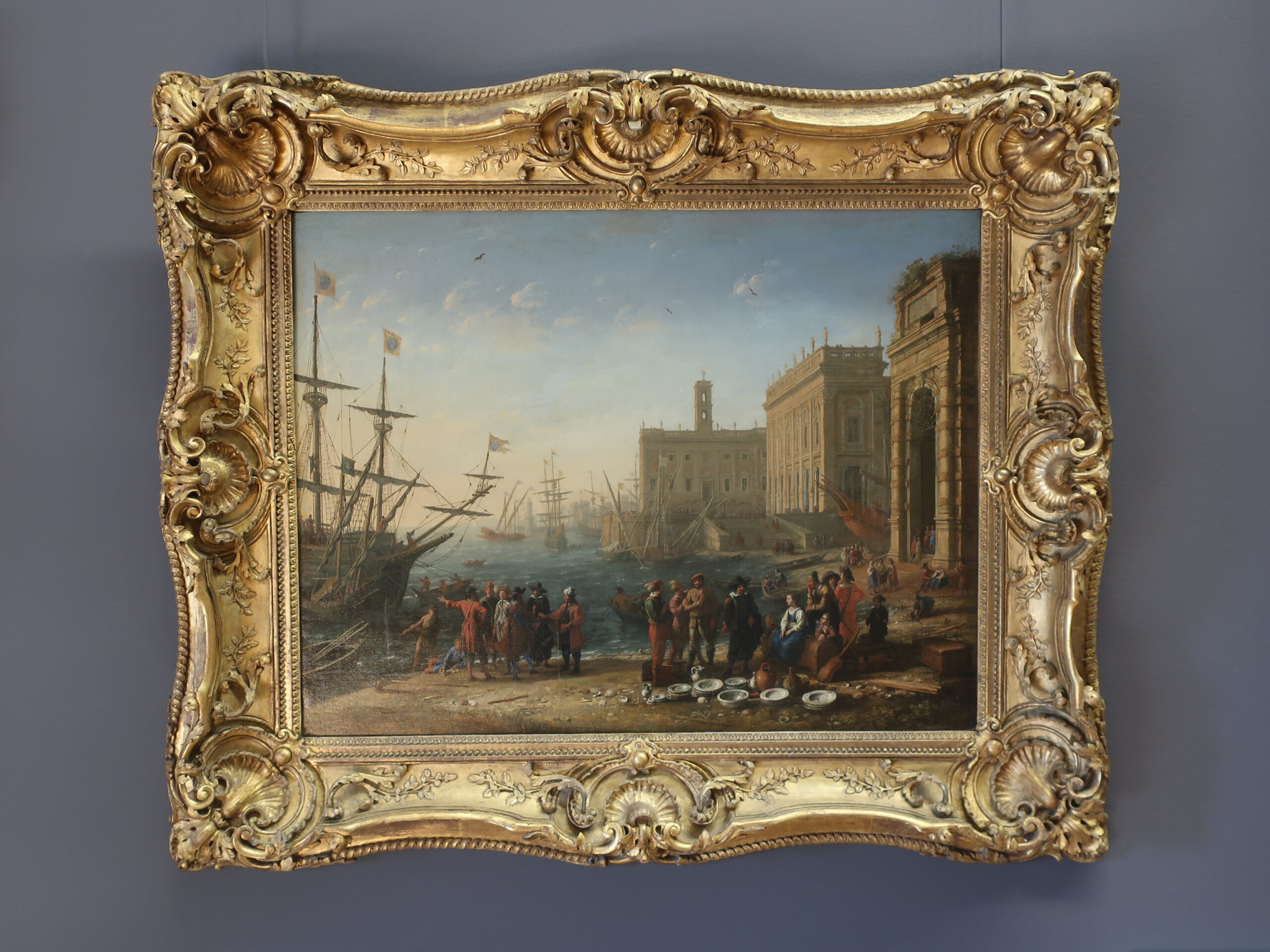(11) Claude Lorrain, Dostoevsky's favorite ideal landscape painter, was discovered at the Louvre Museum. Claude Lorrain and Poussin, the genius of his time, are also introduced.
When one thinks of Paris, the Louvre Museum is probably the first thing that comes to mind.
It is a haunted museum filled with famous works such as the Venus de Milo and da Vinci's Mona Lisa.
However, as someone who is interested in Dostoevsky, this museum was actually not on my radar. To be honest, there was nothing in particular that I really wanted to see. I just thought, "Well, it's the famous Louvre, so I might as well go.
However, when I actually visited this museum, I was greatly ashamed of myself for thinking such a thoughtless thing. This is a wonderful museum that deserves to be recognized. It is a bit presumptuous of me to say so now, but I will say this: "The Louvre was amazing! The Louvre was amazing after all!
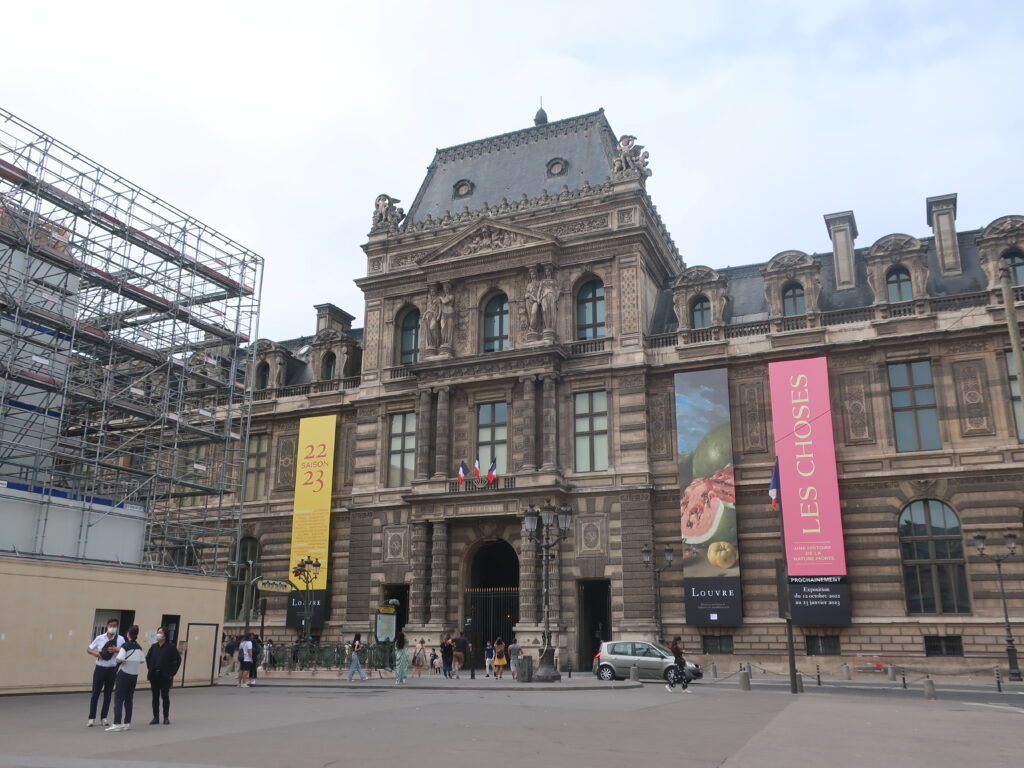
There are several entrances to the Louvre, but I entered the grounds from the Palais Royal side to the north.
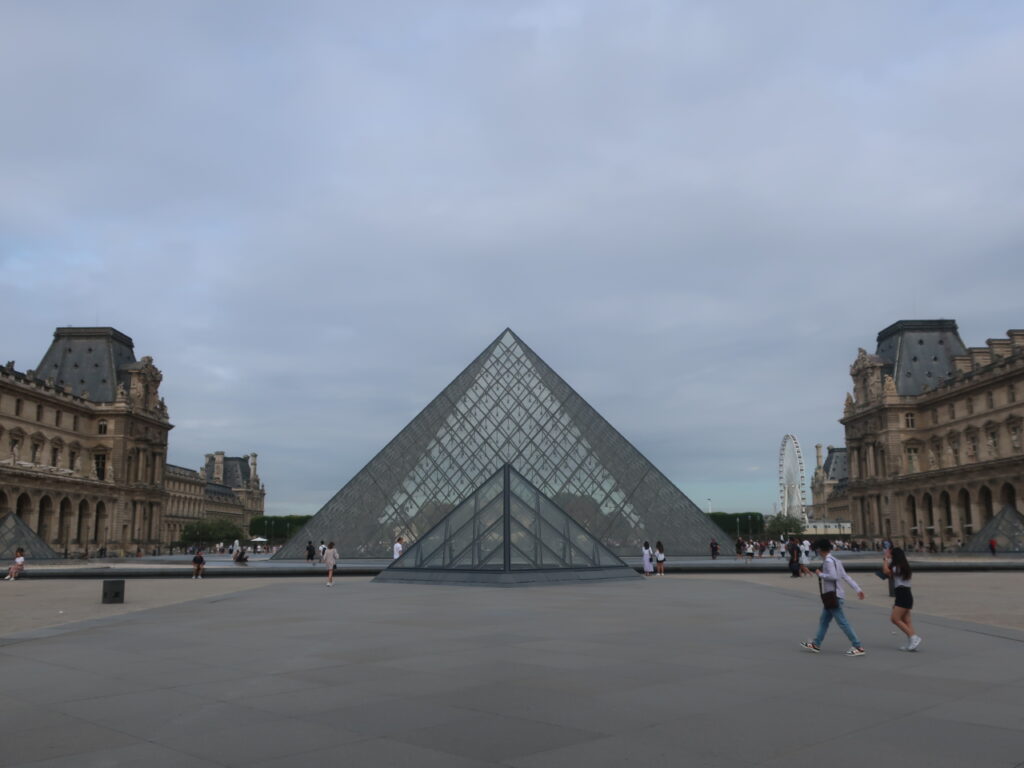
The Louvre is also known for this. It is a glass pyramid. It must be beautiful when illuminated at night.
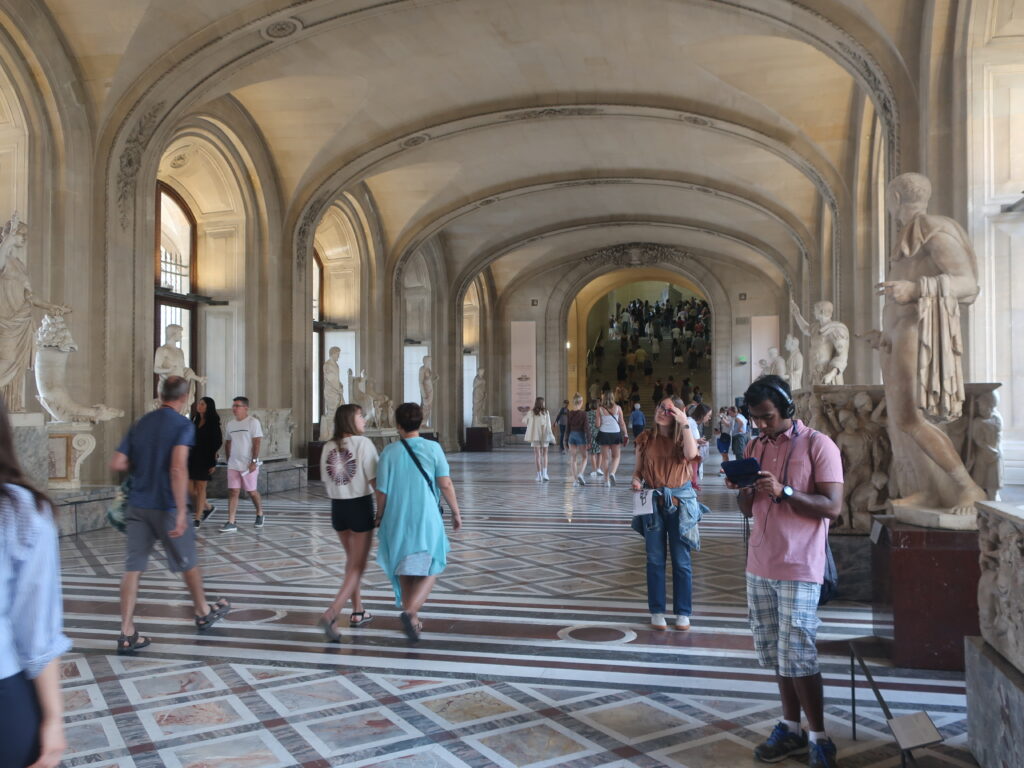
The area immediately after entering the museum exhibits sculptures. And, just beyond this photo, you can see one of the faces of the Louvre, the "Niquet of Samothrace".
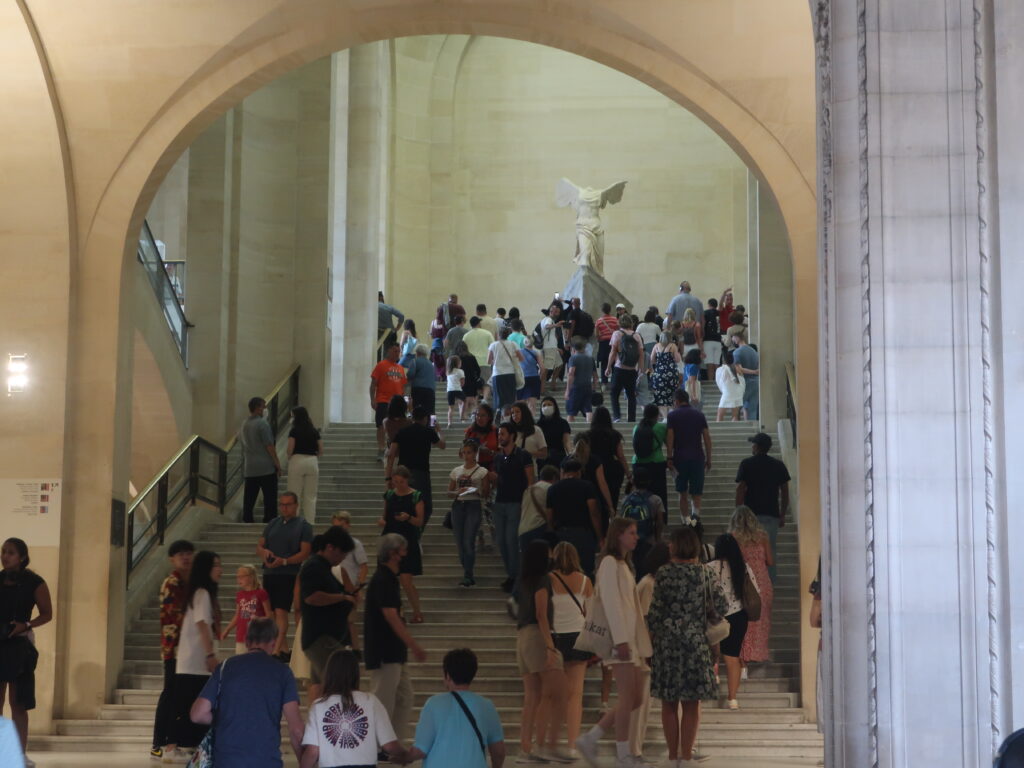
Nike stands alone in the hall at the top of the stairs.
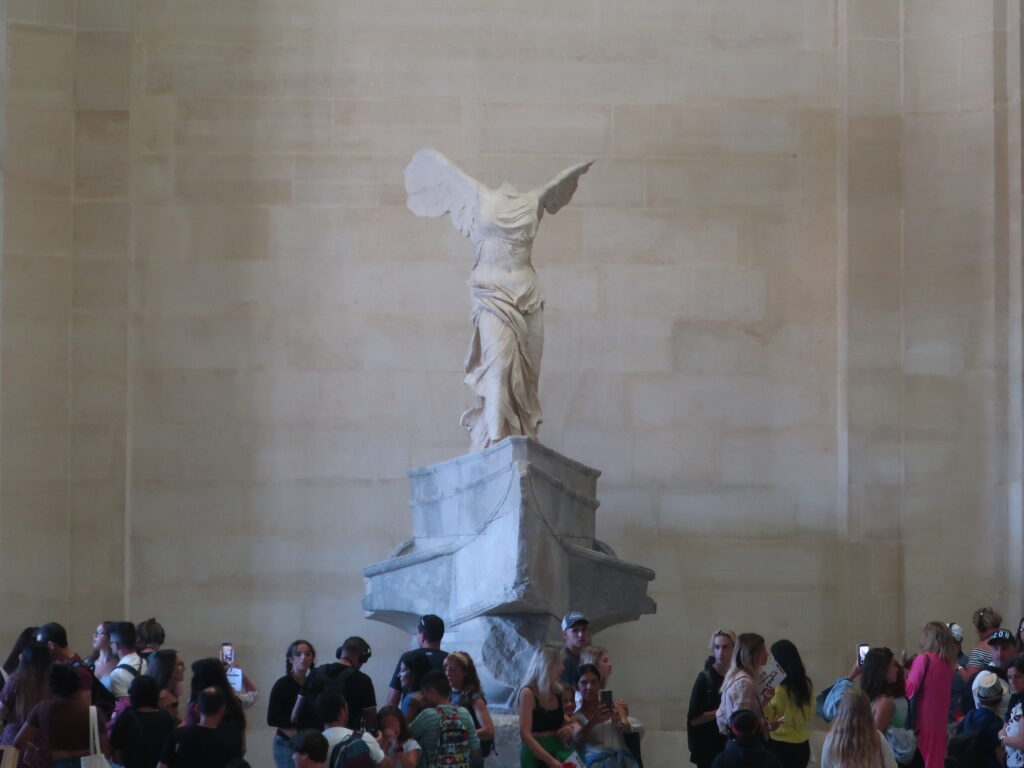
I am ashamed to admit that I knew next to nothing about this sculpture. The sculpture was featured quite prominently on the Louvre's website and in their brochures, but I hardly even took notice of it. I had completely underestimated it.
But what do you think? I stayed in this city for about a week, and if you were to ask me what was the most shocking thing I saw in Paris, I would definitely say this "Nique of Samothrace". I was so shocked that I could not move from this place for a while. I will talk about Nike in the next article, so I can't say more about it here.
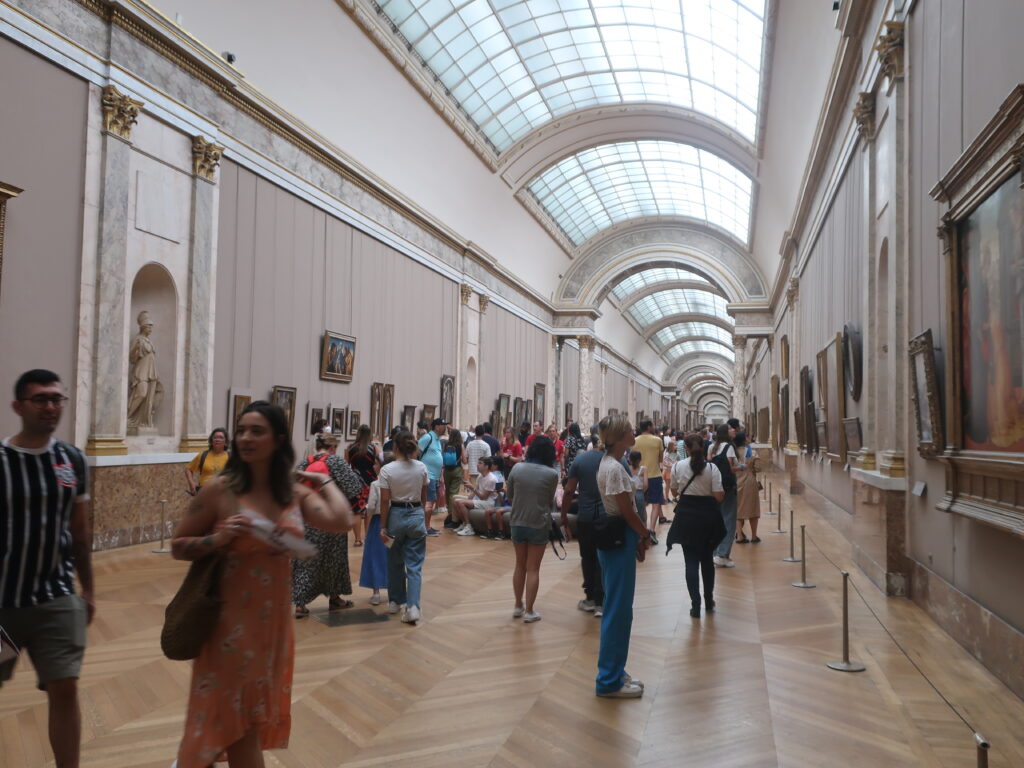
Finally, we entered the area where paintings are exhibited. Here, works by da Vinci and others are also on display.
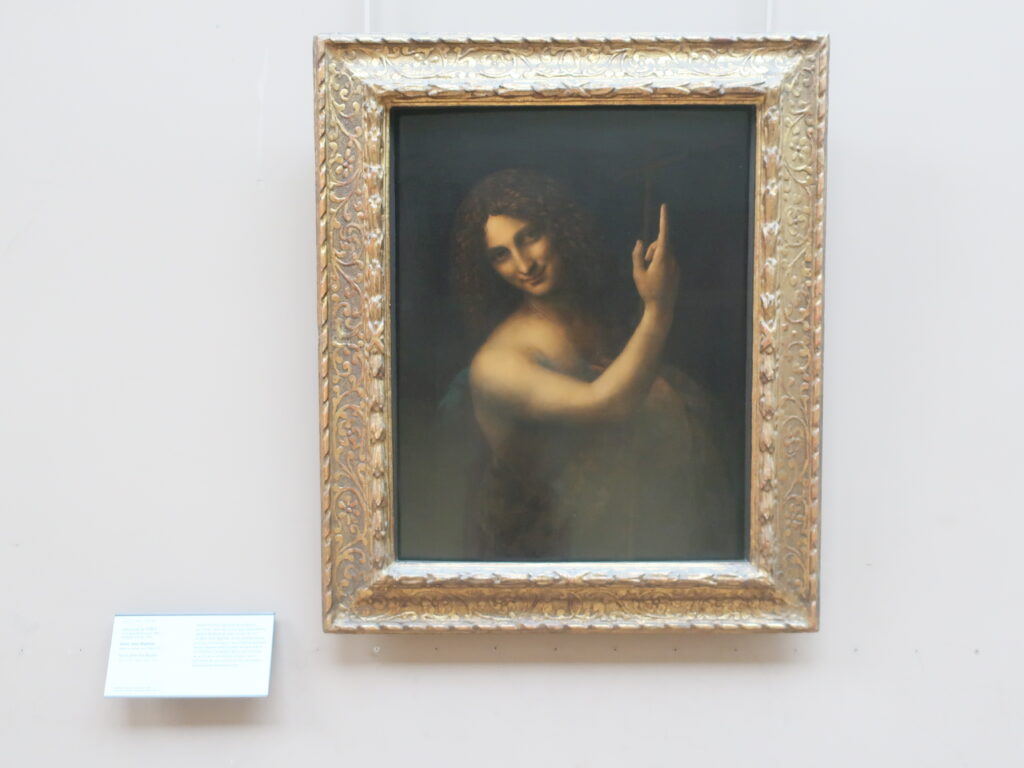
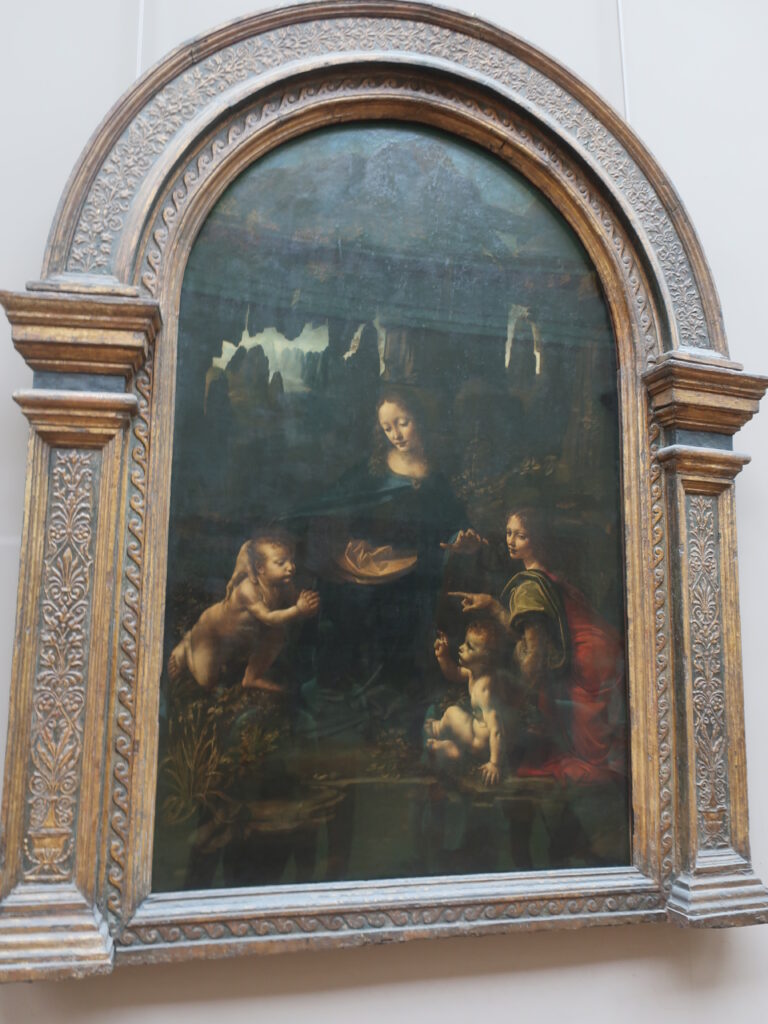
Surprisingly, despite the fact that these are also very famous masterpieces, there were no crowds in front of them. I was able to appreciate them without worrying about the crowds. I wondered if everyone went straight to the "Mona Lisa".
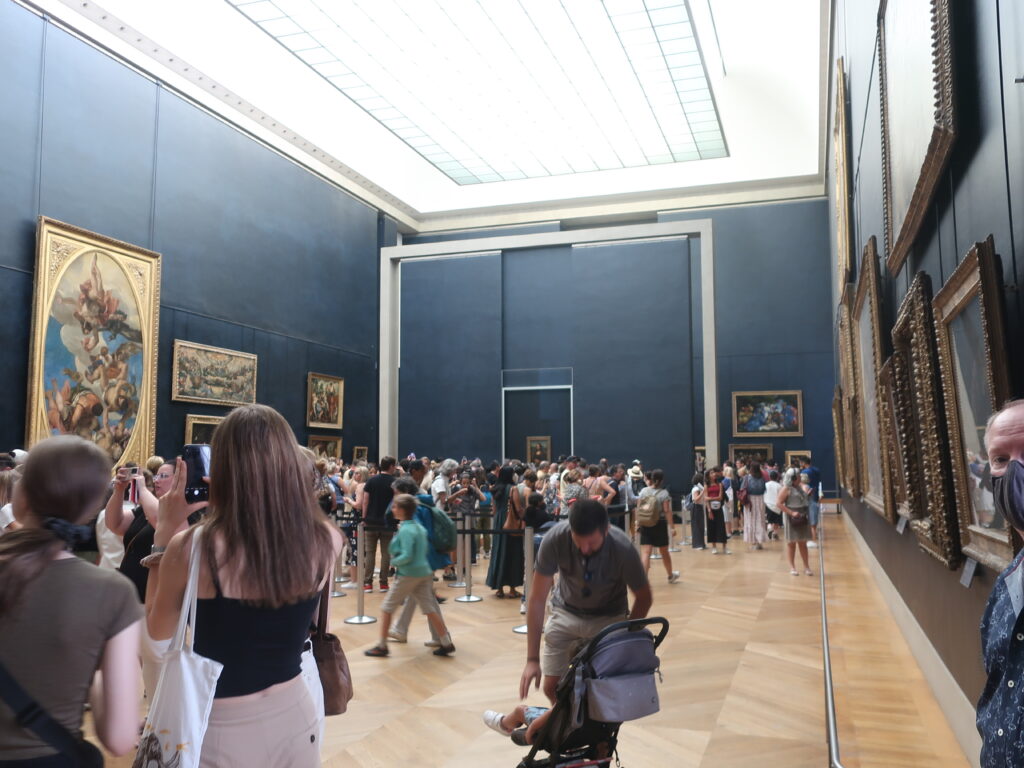
Now, here is the room with the "Mona Lisa". As expected, there was a big line. I also got in line and was able to see it up close for a short while. However, I felt uncomfortable. It was impossible to watch it carefully. I think the room was relatively empty even though I was in the queue. I waited only about 10 minutes. However, if it were more crowded than this, I might have given up even watching it in the first place.
Sadly, I actually don't really have much of a connection to da Vinci's paintings in the first place. Perhaps it is a matter of taste, I think. I understand da Vinci's overwhelming painting ability. But I just can't get enraptured by them. What is it about da Vinci that I don't like? This is a question that I have not been able to solve since I returned to Japan. Perhaps it is da Vinci's perfection that keeps me away. The Louvre made it clear to me that I prefer Michelangelo to da Vinci. I can't get enough of the dynamic and dramatic style of Michelangelo's Sistine Chapel ceiling paintings and "The Last Judgment". In this light, da Vinci's work has a sense of mathematical precision and perfection. I don't mean to sound "cold," but perhaps I am intimidated by his perfect reason.
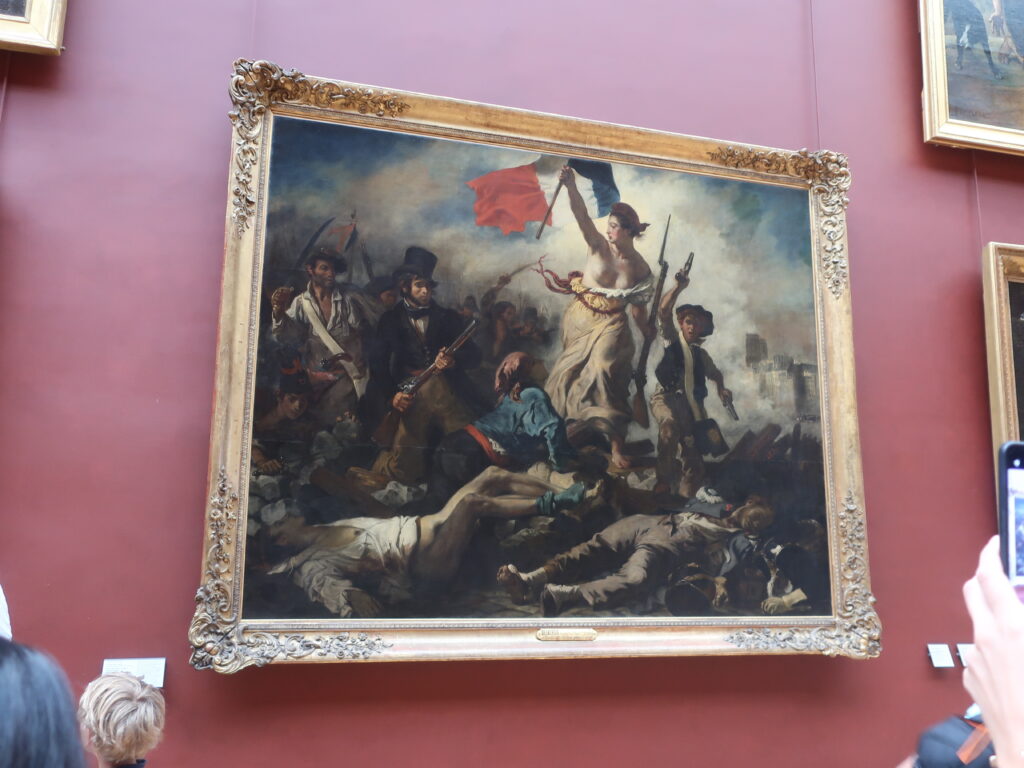
I continued to admire the Louvre's masterpieces, but when I entered a sparsely populated room, I couldn't help but exclaim, "Oh, my God!
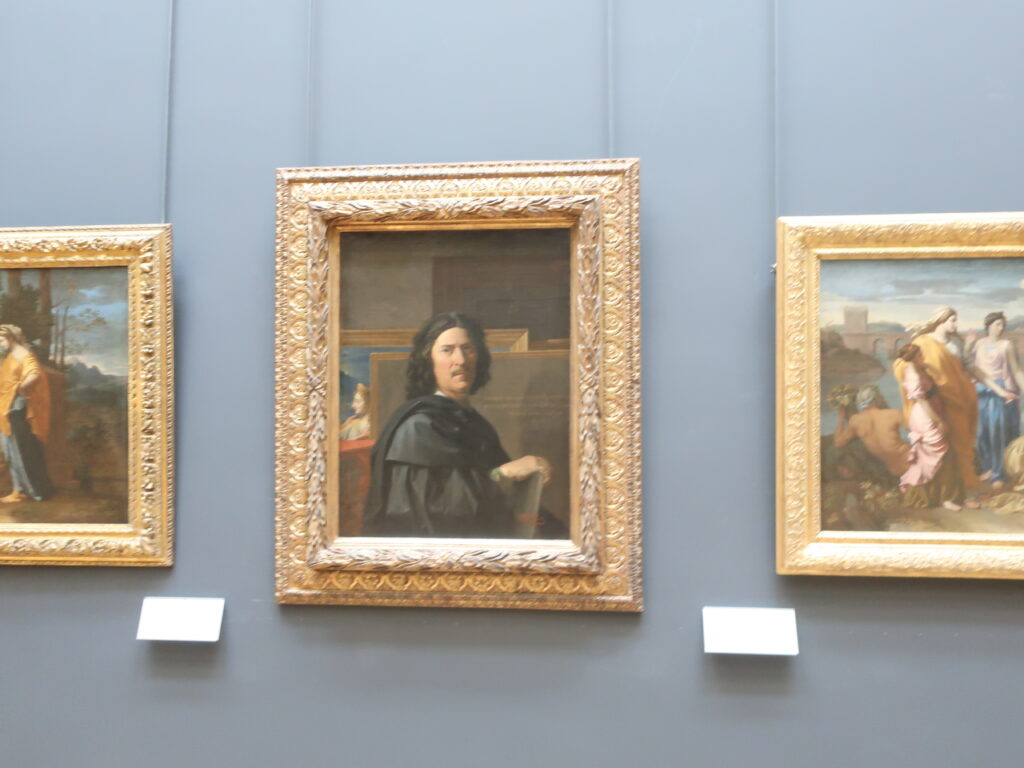
Nicolas Poussin, one of the most famous painters of the 17th century, was there! This was a no-mark.
Poussin was previously discussed inAkira Kondo, "Poussin, Father of Painting," a biography of the great painter of ideal landscapes, who became a canon of the French Academy.As I mentioned in the article "The History of Painting in Europe since the 17th Century," he was a very influential figure in the history of European painting from the 17th century onward.
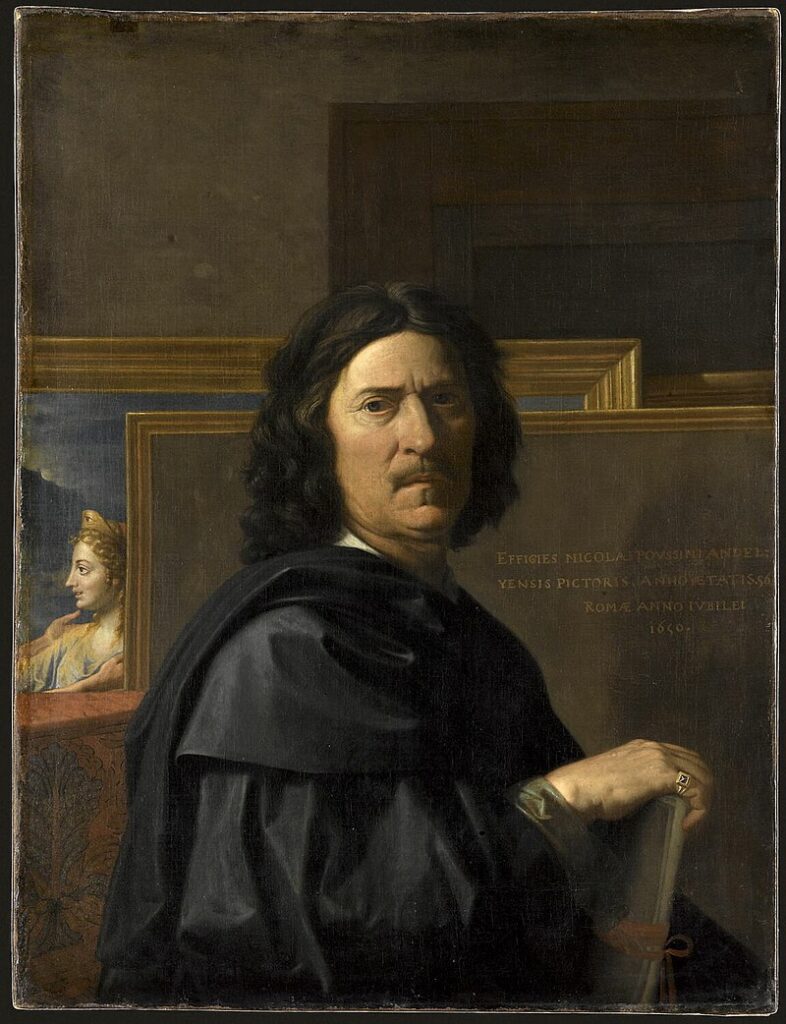
Poussin and Europe (especially the French Academy) is summarized in an easy-to-understand passage by Yasushi KimuraThe Revolution of Impressionism.Since it is in a book called "The Book of the Year," let's read that one.
Born into a bureaucratic aristocratic family, Poussin grew up with a Latin education, the elite education of the time. This education was not necessary for a boy who planned to become a painter at that time. Naturally, Poussin decided to pursue a career as a painter, overcoming his parents' great opposition.
Through the filter of the Academy, Poussin, with his wealth of knowledge, culture, aristocratic character, and high moral standards, was seen as the ideal image of Le Brun and other members who sought to break away from the artisan class, which was regarded as "lowly" by society.
Poussin did not want to pander to the masses, who lacked aesthetic sense and education, and avoided public works such as church altarpieces as much as possible, preferring to create private works for his wealthy and cultured upper-class clientele. As a result, he was able to create works that appealed to the intellect and reason and moved the viewer, rather than those that simply delighted the eye.
And Poussin, who believed that "the subject must be noble," saw the public as simply fascinated by color, which he considered vulgar. Therefore, in his paintings, he emphasized "form and composition," which appealed to the intellect and reason, rather than color, which appealed to the senses. Poussin's approach and theory became the official aesthetic code of the academy, or French Classicism.
Although Poussin spent most of the mature years of his life in Rome, he had many friends and clients in France who were considered the intellectual elite, through whom Poussin's work was brought to France.
Shueisha, Taiji Kimura, The Impressionist Revolution, p. 59-60
Poussin's characteristic, as described here, is "to paint works that appeal to the intellect and reason and move the viewer, rather than works that are simply pleasing to the eye.
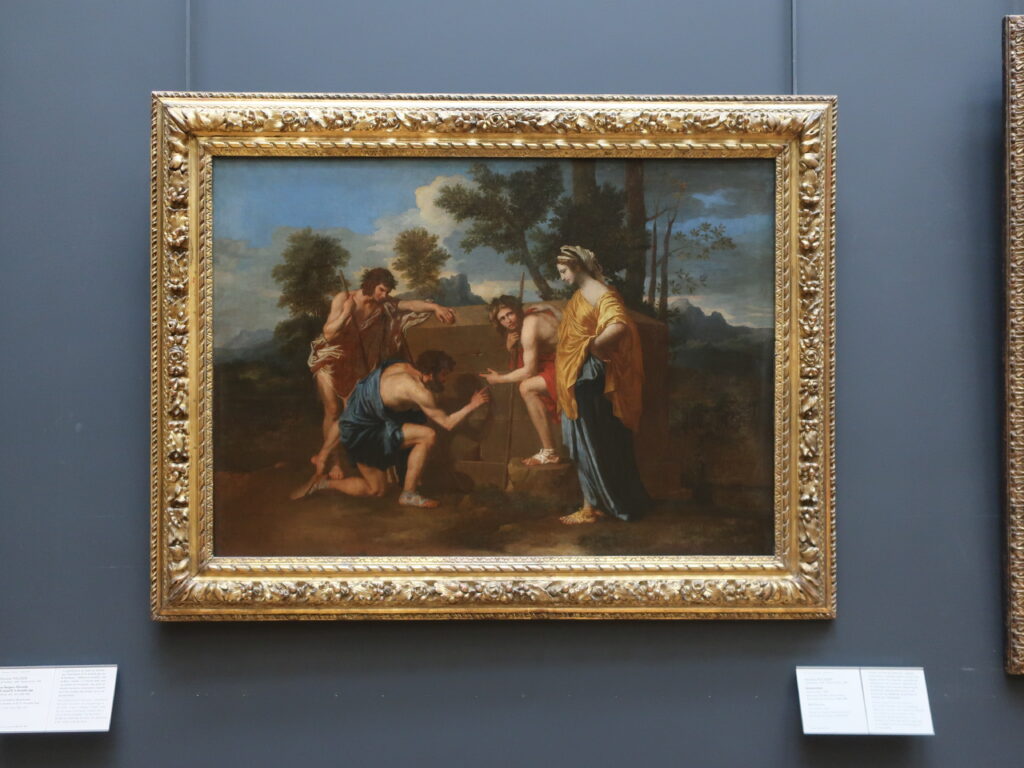
Poussin's paintings, which dominated the 17th century, are richly sprinkled with "allegory. Poussin's paintings are overwhelmingly beautiful, which can be recognized the moment one sees them, but they also contain a great deal of "allegory," which cannot be understood without knowledge of the classics and a high level of understanding of painting.
This depth, which required a high level of culture and aesthetic sense, was highly favored by the upper class of the time.
I now realize that many of Poussin's paintings were exhibited here in the Louvre.
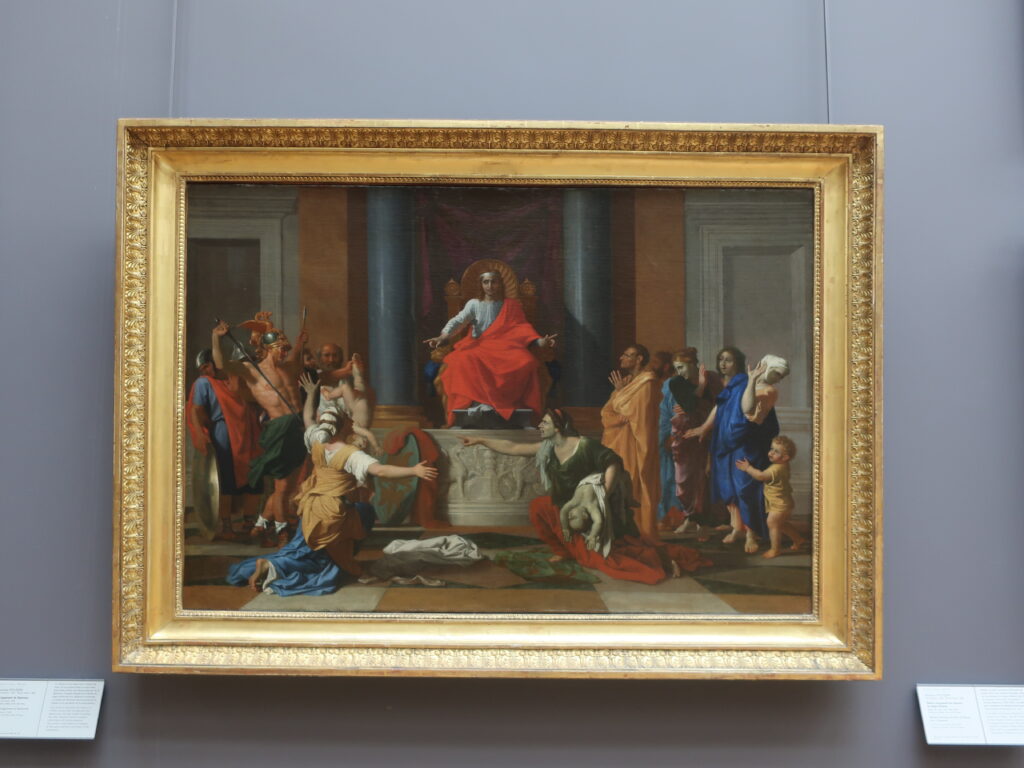
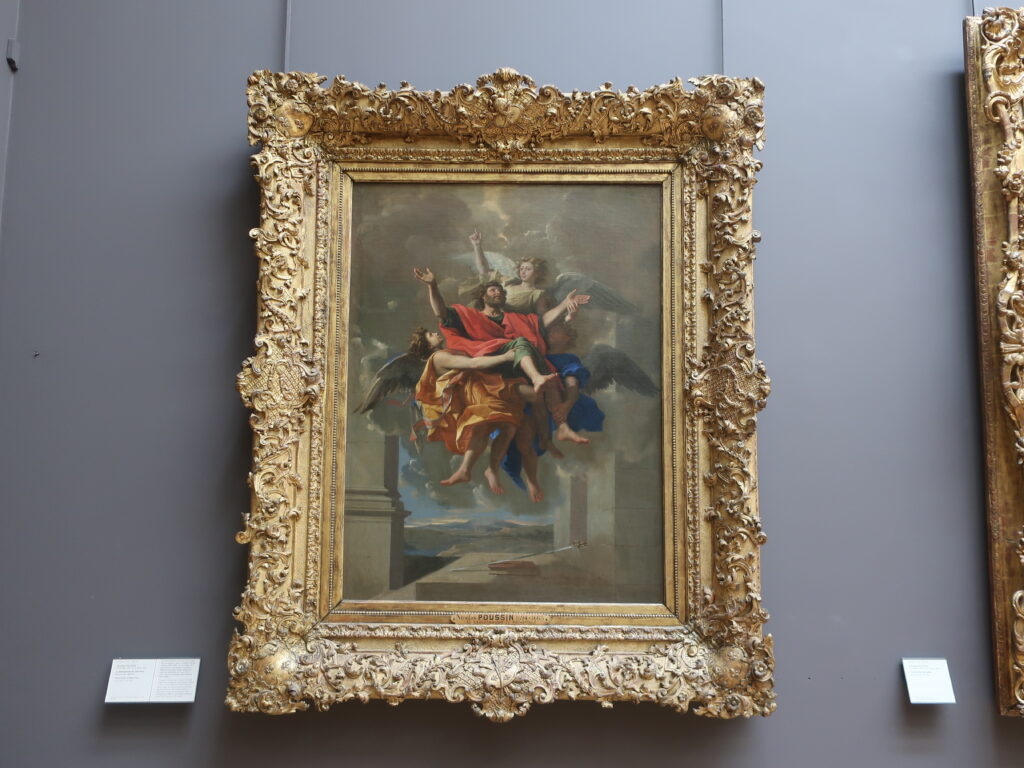
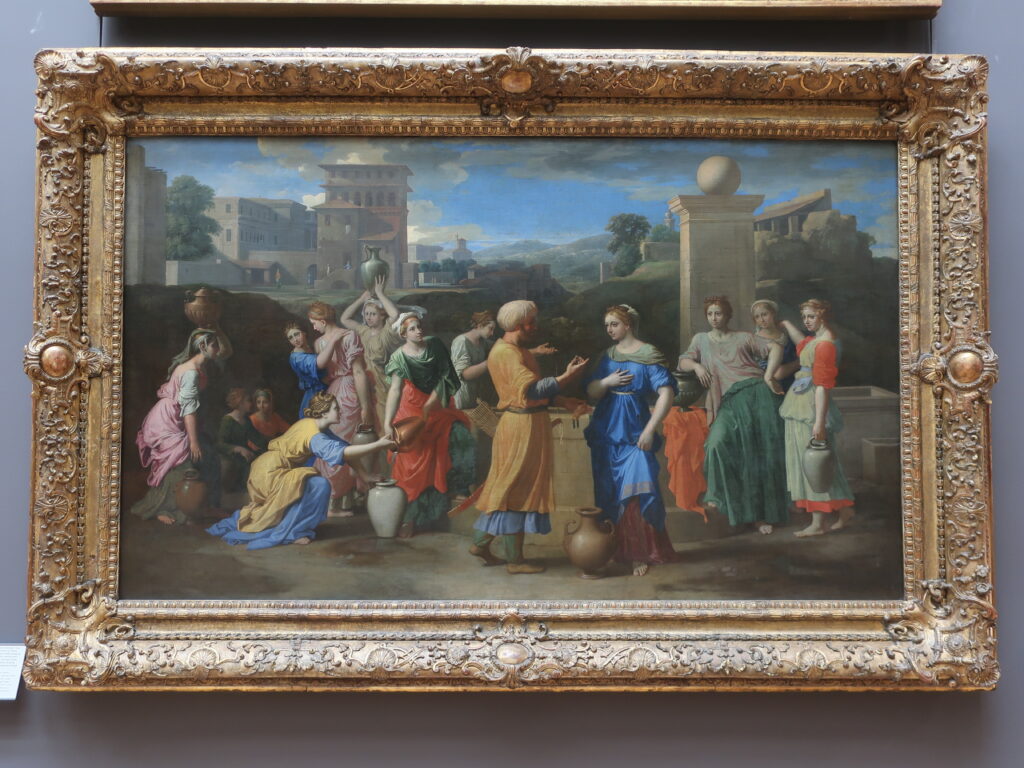
Of these, I was particularly drawn to Eliezer and Ribeka.
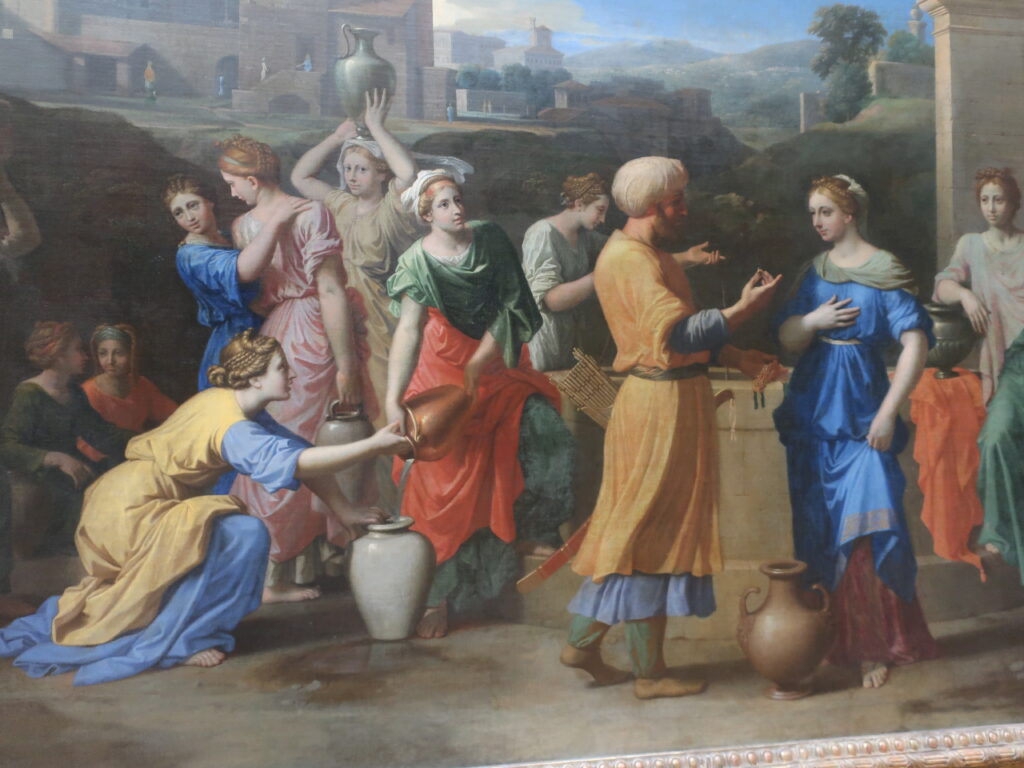
The background scenery of this painting is magnificent, but the texture of this vase gives it an unusual presence when seen in person. There was something there that went far beyond mere realism and such. I got a completely different impression from what I had seen in art books.
Then I proceeded to the next room, where I was met with a further surprise. I took a quick look and thought, "Huh?" I thought. And as I got closer, I was convinced. It's Claude Lorrain!
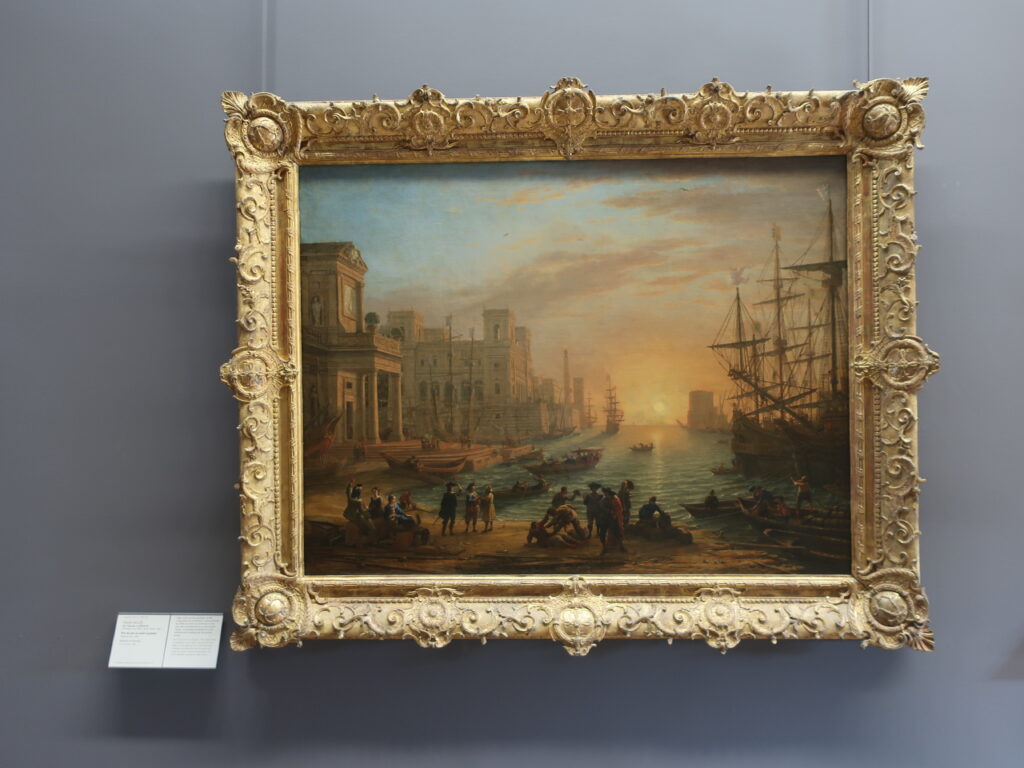
I never thought I would come across a painting by Claude Lorrain here! My surprise at this moment was already enough to make me almost hold my breath.
For me, the only image I had of Claude Lorrain was that of the Dresden Picture Gallery in Germany. I had completely forgotten that, like Poussin, Claude Lorrain's paintings are housed in the Louvre Museum.
The reason why I am so attached to Claude Lorrain is that this is the painter whom Dostoevsky loved.
Claude Lorrain's paintings of ideal landscapes (with Arcadia, the past ideal world, as the subject matter) had fascinated Europeans since the 17th century. And its influence has been enormous ever since, with Dostoevsky also having a strong attachment to Claude Lorrain's paintings, which influenced his full-lengthEvil Spirits."andMinors."The results can be seen in the following table.
Dostoevsky directly mentions it in his work "Achis and Galateia," which is in the collection of the Dresden Picture Gallery below.
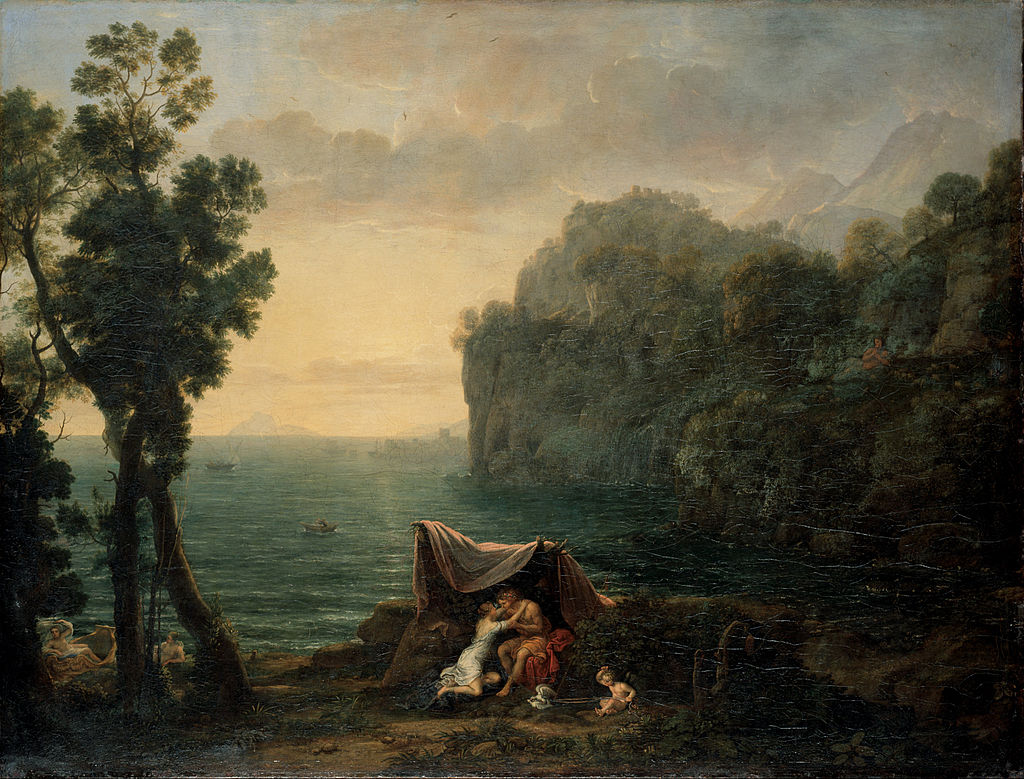
But here at the Louvre, there are numerous masterpieces on display that depict "the light of the setting sun gently illuminating the entire stage," which is synonymous with Claude Lorrain. This was a pleasant surprise for me from the bottom of my heart.
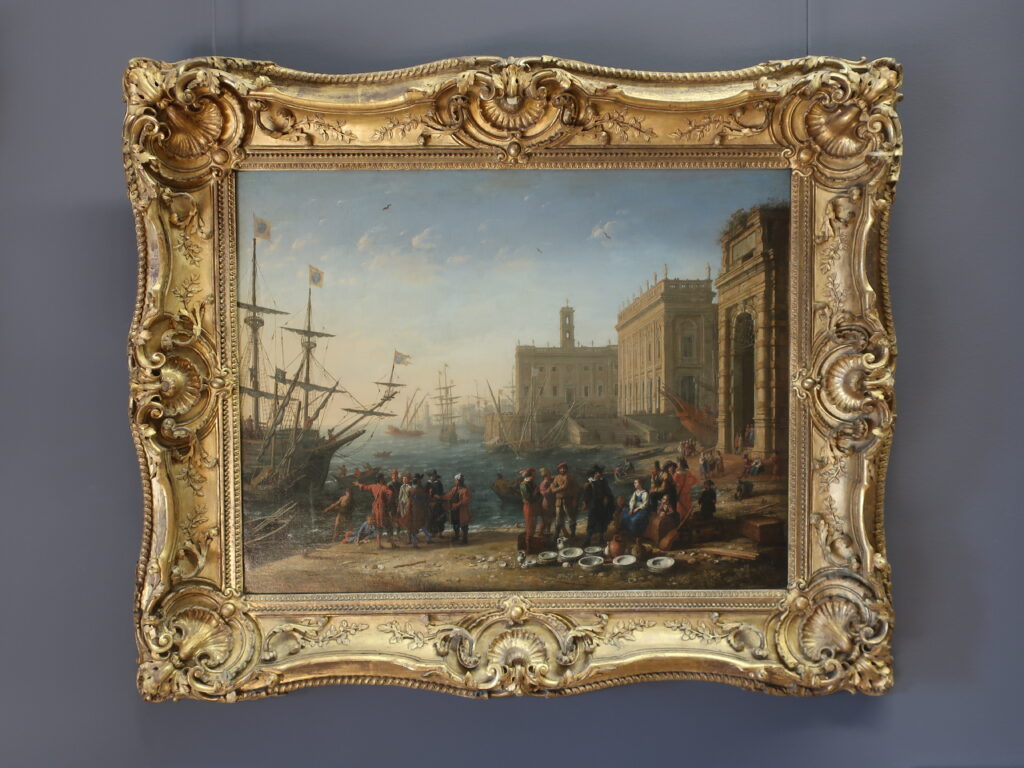
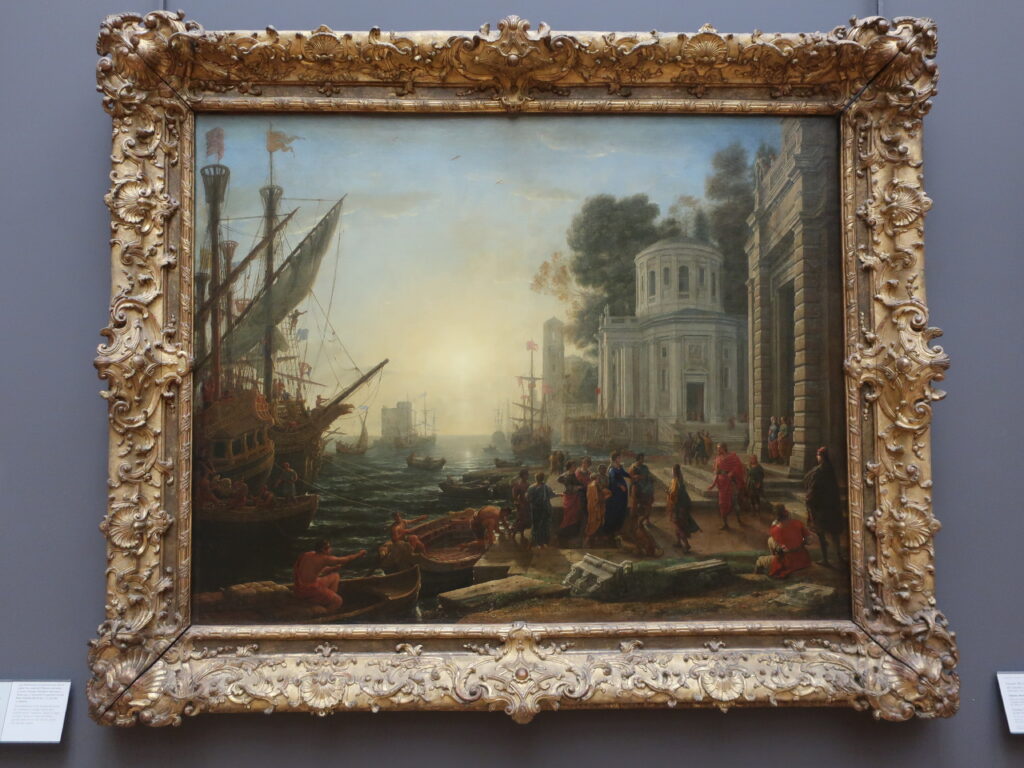
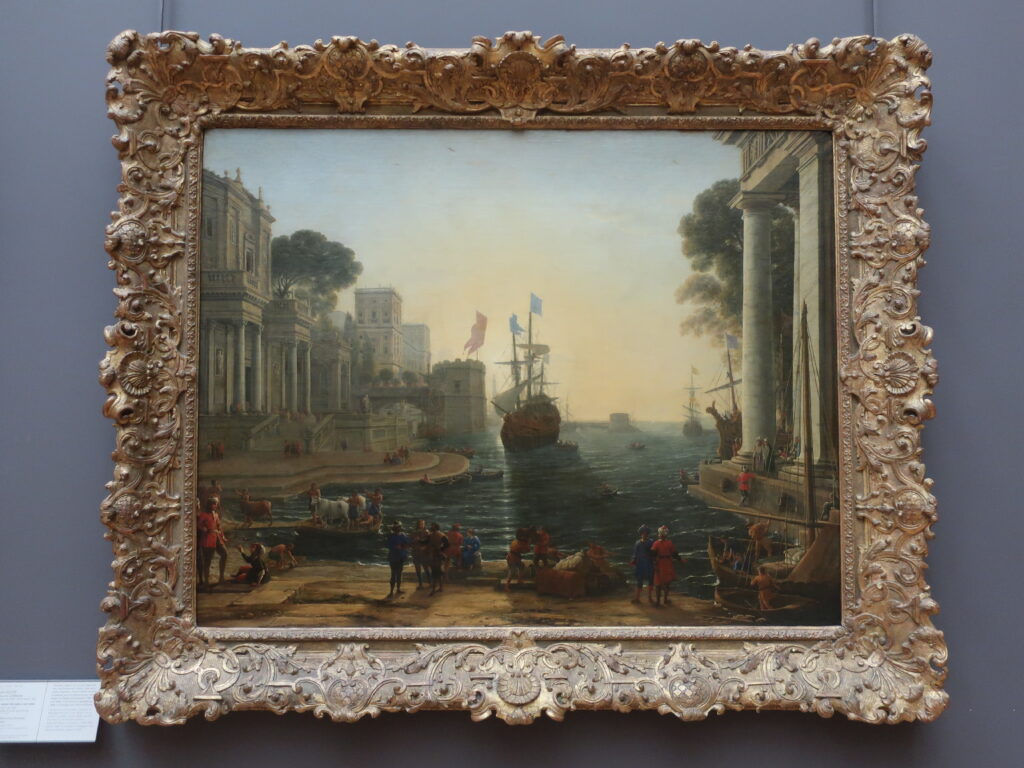
I was surprised to see Poussin there, and even more pleased to see Claude Lorrain in the next room.
Unfortunately, few people come to the exhibition room where they are located. Even if they do, they pass by quickly. I think this is a real waste of time. Even if you have no connection to Dostoevsky, Poussin and Claude Lorrain's paintings are just wonderful.
Poussin had a decisive influence on French painting, and Claude Lorrain is known to have had a huge influence on the English painter William Turner. We hope you will refer to the following article in which we discuss Turner.
At the Louvre, I was also able to see paintings by Vermeer, Rembrandt, Latour, and others.
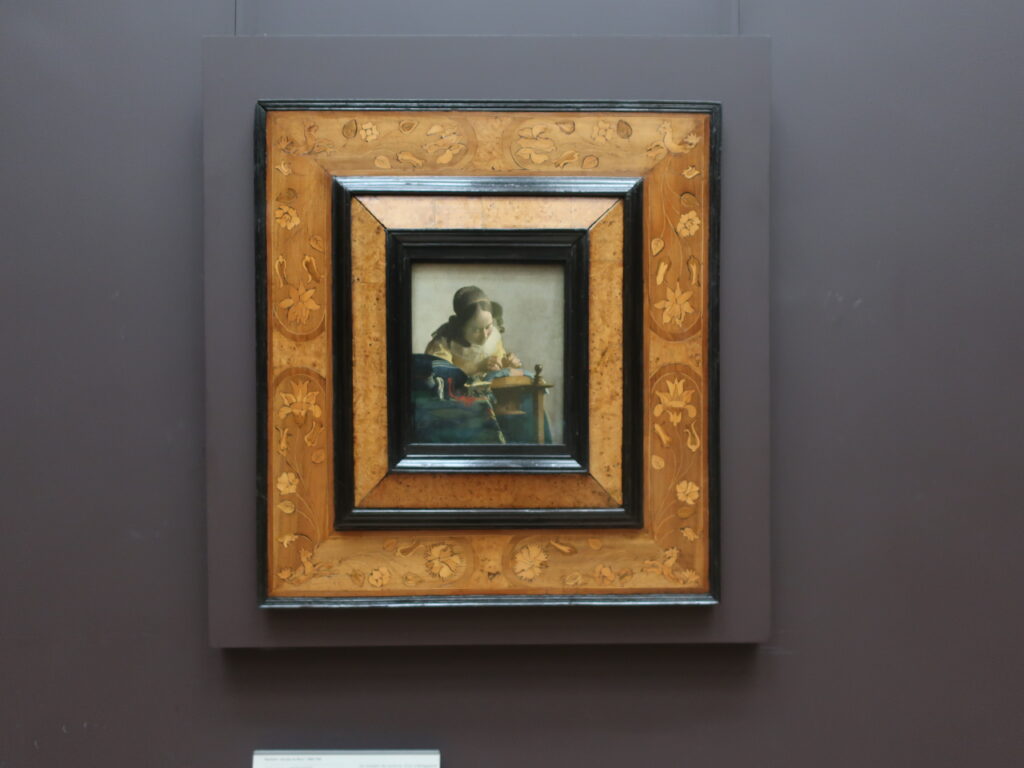
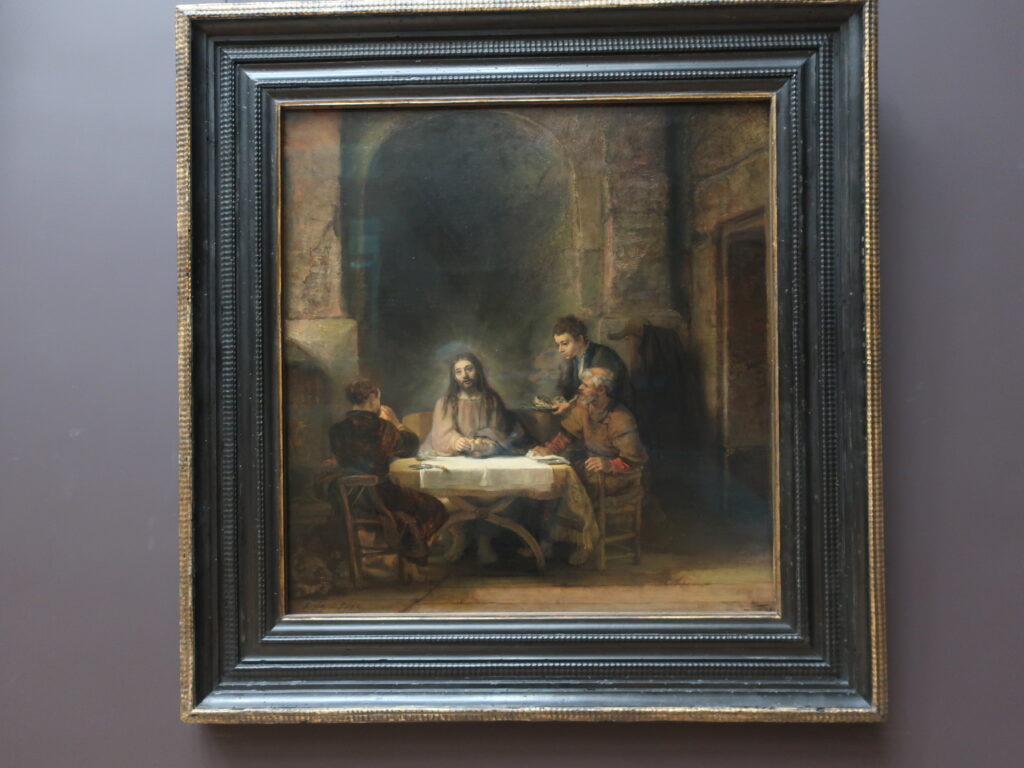
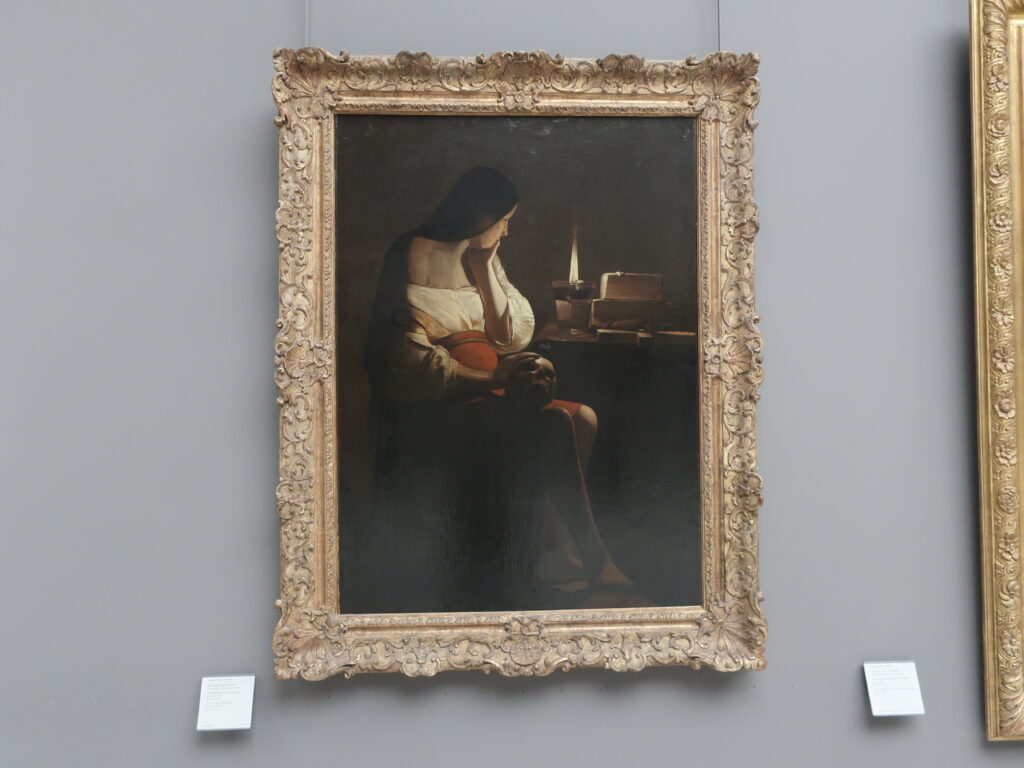
It was a wonderful experience to see the works of these masters who skillfully depicted light and shadow. Unfortunately, I was unable to see Vermeer's "The Astronomer," which I had hoped to see, because he was on a business trip.
I came to the Louvre completely unmarked, but I was completely charmed. All I can say is, "I underestimated it. I can only say, "I underestimated it, and I am very sorry.
In the next article, I will talk about "The Nike of Samothrace" again. I was really taken aback by how wonderful it was. This sensation is the same as that of the St. Peter's Basilica.since Michelangelo's PietàI wonder if it is, it was such a wonderful piece of work. We hope you will continue to follow us.
be unbroken
Next Article.
Click here to read the previous article.
Related Articles











